 |
Loadin
|
 |
 |
Loadin
|
 |
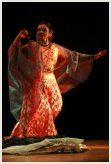 |
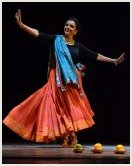 |
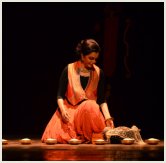 |
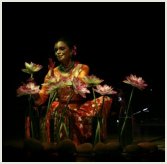 |
 |
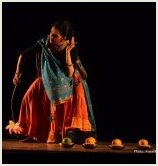 |
|
Home
| Synopsis
| Credits
| Calendar of Performances | Critics Speak | Response | Photo Gallery
a million SITA-s - Response a Neo Bharatam presentation Response - students' feedback to the performance on May 3, 2015 at the NYU Steinhardt School, Greenwich Village Storytelling in the Classroom, Spring 2015 - Kordell Draper Seeing Anita Ratnam tell the story, A Million Sitaswas a truly captivating experience. Ratnam combined traditional text and classic storytelling techniques with dance, music, and standard theatrical conventions to bring the story of Sita to life. Coming to the performance of A Million Sitas I was slightly hesitant. This was going to be my first storytelling show and I was skeptical about how the simple telling of a story can keep someone captivated for the full performance. Luckily, I was pleasantly surprised that Ratnam was able to do just that for the entire performance. I think multiple aspects of the show allowed this captivation to occur, such as the “nonconventional” storytelling Ratnam did as well as the audience engagement and energy towards the piece. Ratnam combined the story itself with dance, music, and more common theatrical conventions to create a well-rounded performance. What I loved about her doing this was that it showed different aspects of Indian culture. I felt that I was able to learn so much more than just a story from India, but I learned something about Indian music and Indian dance as well as clothing and masks. I felt I was immersed in the culture by the different aspects of performance that she brought in to share. However, I seemed to have found myself questioning the authenticity of traditional storytelling. With the use of sound effects, costume changes, props, etc., I felt I was focusing on what was happening to enhance the story rather than the story. In addition, parts of the performance with these added theatrical conventions came off as unrehearsed and slightly sloppy, which detracted from the performance for me. I felt that the flow of the story was interrupted, just as if a movie suddenly stopped playing and started again. What was so interesting to me was the audience response during the telling. First of all it was an audience comprised of primarily Indian people and it was so fascinating to see everyone respond weather it be verbally or physically to what Ratnam was sharing. I think it is interesting to see how people react to their culture being displayed so gracefully and respectfully even if it is not a common view just as the story of Sita is in its relation to men of this culture.I felt that the audience really completed the circuit of the performance and that we were extremely valuable to the performance. I realized storytelling performance can be extremely similar Brechtian theatre. For example, Ratnam told the story, reacted to the story herself and also reacted to the story as character but not at one time. It seemed that her words were always as a storyteller and her body was a character at times and then her body was herself at other times. In Brechtian theatre, the performer shows themselves as the character, and then steps out as performer and let’s the audiences respond, and I feel that was done here as well. It allowed me to react and make my own opinions without being influenced, which I thoroughly enjoyed. Ratnam’s version of storytelling seemed new and what storytelling could be moving towards with the combination of different art forms and theatrical conventions. However, I want to see true, traditional storytelling, “campfire storytelling” if you will, and see what makes classic storytelling so effective without anything extra to enhance it. I think that would be a true, captivating, storytelling, experience that would be great to be part of as an audience member. Home | Contact |
About Arangham | About Anita Ratnam |
Events | Archive of events | Calendar of events
| On Tour | Press
|
Articles | Lectures | Publications | Active Repertoire | Festivals | Conferences | Rituals & Revivals | Workshops | Art & Activism |